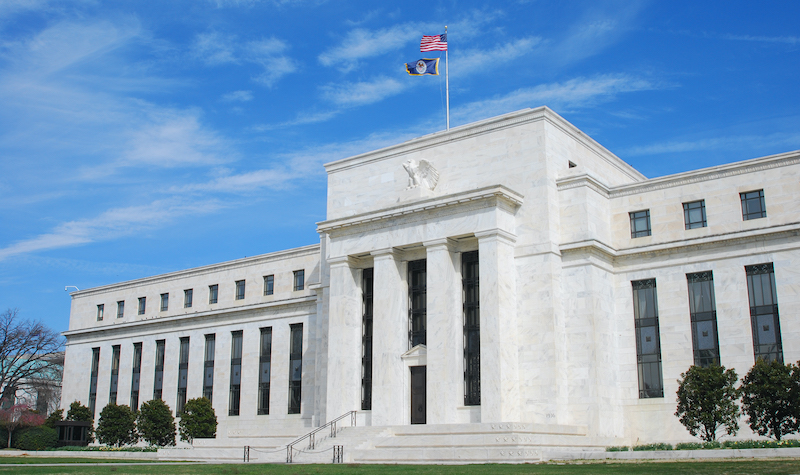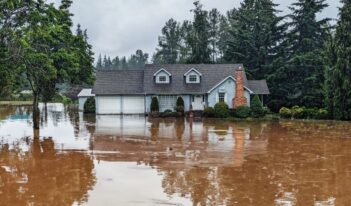
The Fed is beginning to consider policy responses to climate change.
November marked an important turning point in U.S. climate change policy. Days after President-Elect Joseph R. Biden secured the electoral victory necessary to return the United States to the Paris Agreement, the Board of Governors of the Federal Reserve System recognized climate change as a systemic financial risk for the first time.
The interaction between the financial sector and carbon emissions is often overlooked, yet the financial system is essential for the continued expansion of the fossil fuel industry. In the years following the Paris Agreement, the 33 largest banks in the world spent over $1.9 trillion financing fossil fuel projects. The strong nexus between the financial system and the climate crisis prompted then-presidential hopeful Elizabeth Warren to release a plan entitled, “Stop Wall Street From Financing the Climate Crisis.”
But the interaction between finance and climate runs the other way, too. In its semiannual financial stability report, the Federal Reserve Board noted that “climate change adds a layer of economic uncertainty and risk,” which the Fed has just begun to incorporate in its “analysis of financial stability.”
Soon the report’s release, the Federal Reserve joined the Network of Central Banks and Supervisors for Greening the Financial System (NGFS).
The NGFS is a forum dedicated to “bringing together central banks and supervisors committed to better understand and manage the financial risks and opportunity of climate change.” Currently, the Federal Reserve and the Reserve Bank of India are the only major central banks not part of the NGFS.
Being late to join the NGFS is merely one reflection of the fact that the Federal Reserve has been slower to react to the financial risks posed by climate change than many of its European counterparts.
Across the Atlantic, regulators are beginning to experiment with various ways to price-in the cost of carbon into the risk assessments of banks. The Bank of England plans to institute a pioneering climate stress testing of financial institutions under its regulatory reach, although implementation has been delayed.
Stress testing was developed following the Great Recession and is a process by which central banks evaluate whether financial institutions are secure enough to weather various economic scenarios. In particular, the process involves an examination of the risk of the assets held by financial institutions.
When financial markets ignore or do not sufficiently consider the risks associated with climate change or an eventual transition away from fossil fuels, they do not “price-in” the cost of carbon. Climate stress testing corrects this by testing banks under scenarios in which the value of brown assets—assets linked to fossil fuel investments—precipitously drops. By requiring greater capital to be held against brown assets, such testing not only prices in the risks posed by such assets but also encourages divestment from them.
Although the European Central Bank has not incorporated climate stress testing on a mandatory basis, it does expect lenders to identify their climate change risks and take steps to mitigate their exposure.
The Federal Reserve has not implemented any such steps, and the November report only describes in vague terms how the Federal Reserve is “evaluating and investing” in ways to incorporate climate risk into its assessments of financial institutions.
But financial experts like Sarah Bloom Raskin, a former governor at the Federal Reserve, have called on the Federal Reserve to implement climate stress testing.
Not everyone is supportive of the Federal Reserve expanding its focus on the financial risks associated with climate change. According to John Cochrane, an economist at the Hoover Institution, claims that “climate change does not pose any financial risk at the one-, five-, or even ten-year horizon at which one can conceivably assess the risk to bank assets.” He argues that because risk entails “unforeseen events” and the immediate effects of climate change are “well-modeled,” they do not pose a significant risk to financial markets.
Cochrane also argues that central bankers embracing a climate agenda are making a mistake, not because their policies are misguided but because they necessitate central banks taking on a political role, which makes “a mockery of the central bank’s limited mandates.”
To other economists, such as Federal Reserve governor Lael Brainerd, the risks posed by climate change to the financial system are anything but “well-modeled.” She argues that “there is substantial uncertainty surrounding how or when shifts in asset valuations might occur” due to climate change.
According to Brainerd, if climate does add a layer of volatility to financial institutions, the Federal Reserve’s mandate not only allows it to enact a policy response to climate change but compels it to do so.



